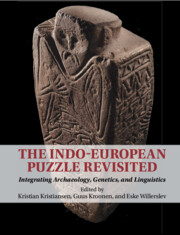Book contents
- The Indo-European Puzzle Revisited
- The Indo-European Puzzle Revisited
- Copyright page
- Contents
- Figures
- Tables
- Contributors
- Preface
- Introduction
- Part I Early Indo-European and the Origin of Pastoralism
- Part II Migratory Processes and Linguistic Dispersals between Yamnaya and the Corded Ware
- Part III The Cultural and Linguistic Significance of Bell Beakers along the Atlantic Fringe
- Part IV The Bronze Age Chariot and Wool Horizons
- Part V Kinship Systems, Marriage, Fosterage, Free, and Unfree
- 19 Mobility, Kinship, and Marriage in Indo-European Society
- 20 Marriage Strategies and Fosterage among the Indo-Europeans: A Linguistic Perspective
- 21 Fostering Women and Mobile Children in Final Neolithic and Early Bronze Age Central Europe
- 22 Hiding in Plain Sight? The Enigma of the Linguistic Remains of Prehistoric Slavery
- Concluding Reflections
- Index
- References
20 - Marriage Strategies and Fosterage among the Indo-Europeans: A Linguistic Perspective
from Part V - Kinship Systems, Marriage, Fosterage, Free, and Unfree
Published online by Cambridge University Press: 29 April 2023
- The Indo-European Puzzle Revisited
- The Indo-European Puzzle Revisited
- Copyright page
- Contents
- Figures
- Tables
- Contributors
- Preface
- Introduction
- Part I Early Indo-European and the Origin of Pastoralism
- Part II Migratory Processes and Linguistic Dispersals between Yamnaya and the Corded Ware
- Part III The Cultural and Linguistic Significance of Bell Beakers along the Atlantic Fringe
- Part IV The Bronze Age Chariot and Wool Horizons
- Part V Kinship Systems, Marriage, Fosterage, Free, and Unfree
- 19 Mobility, Kinship, and Marriage in Indo-European Society
- 20 Marriage Strategies and Fosterage among the Indo-Europeans: A Linguistic Perspective
- 21 Fostering Women and Mobile Children in Final Neolithic and Early Bronze Age Central Europe
- 22 Hiding in Plain Sight? The Enigma of the Linguistic Remains of Prehistoric Slavery
- Concluding Reflections
- Index
- References
Summary
In recent years, it has become increasingly clear that a combination of genetics, archaeology, and historical-comparative linguistics is the only sensible way to reach a deeper and more subtle understanding of the Indo-European question. By now, there is practically general agreement that at the very least, “Indo-Tocharian,”1 defined as the predecessor of all branches of the Indo-European family with the exception of Anatolian, originated in the Pontic–Caspian steppe. The speakers of this common language have been archaeologically connected with the Yamnaya horizon, later continued in northern Europe as the Corded Ware culture.2
- Type
- Chapter
- Information
- The Indo-European Puzzle RevisitedIntegrating Archaeology, Genetics, and Linguistics, pp. 296 - 302Publisher: Cambridge University PressPrint publication year: 2023



